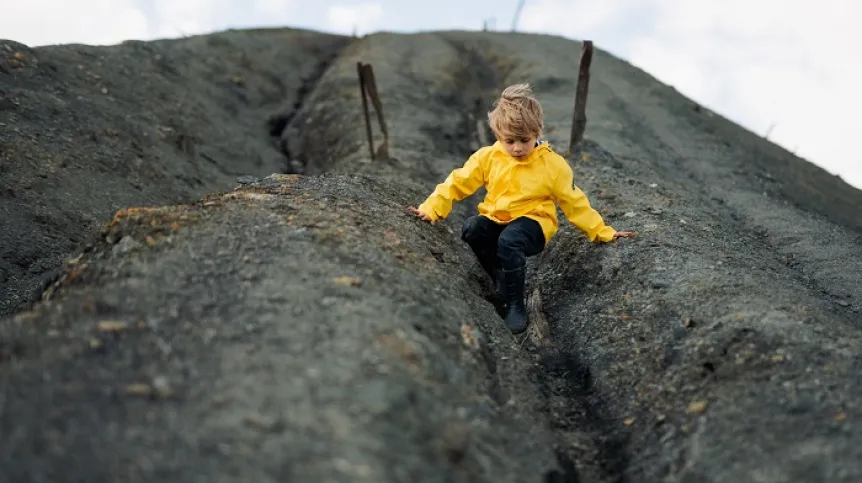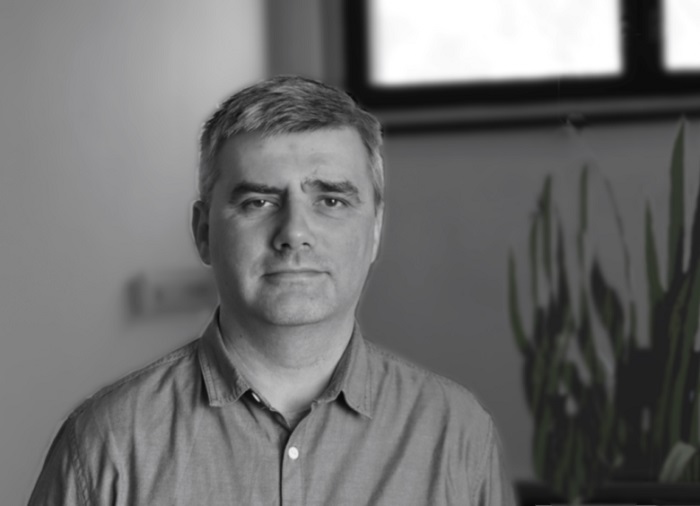
Phytoremediation is a method in which plants are used to remove heavy metals from the environment. Thanks to it, scientists from the Institute for Ecology of Industrial Areas (IETU) in Katowice carried out heap recultivation in Ruda Śląska.
Dr. Jacek Krzyżak from IETU explains that phytoremediation uses plants to remove pollutants with organic and inorganic compounds from various components of the environment - soil, water and air.
There are several technologies within phytoremediation. One of them is called phytostabilisation, the very technology used by scientists in the recultivation of the heap in Ruda Śląska as part of the Lumat project.
'Phytostabilisation is a process in which the ability to retain pollutants in the roots of selected plant species is used to remediate soils. Additionally, the root system itself immobilizes the soil and the contaminants it contains, preventing air and water erosion. As a result, the contaminants do not migrate to the deeper layers of the soil profile,’ says Dr. Krzyżak.
The process of phytostabilization does not clean the substrate, but binds contaminants in the root zone of plants and limits their transfer into groundwater and the food chain. 'The method is widely used in soils heavily contaminated with heavy metals, where technical removal of contaminants is too expensive,’ says Dr. Krzyżak.
In the recultivation of the heap, scientists used assisted phytostabilisation technology. During the research, soil additives were developed to support the growth of plants in contaminated soil and useful plant species were selected.
The plant tolerant to high content of heavy metals in the soil used in this project was perennial ryegrass from the family Poaceae. Several varieties have been used. 'Properly selected plants formed a dense root system in the upper layer of the soil, additionally stabilising and binding it,’ says Krzyżak.
The selection of plants was also carried out to ensure that the plants do not 'carry' pollutants to the above-ground parts and instead accumulate them in the root zone. 'These measures allowed us to significantly improve the conditions on the heap,’ he adds.
Before the implementation of the heap recultivation project in Ruda Śląska, the total contents of lead, cadmium and zinc in the top layer (0-25 cm) many times exceeded the contents permitted by national legislation, even for post-industrial areas, and were respectively: lead - 22,000 mg/kg, cadmium - 100 mg/kg, zinc 41000 mg/kg.
'In addition, all these elements were present in significant amounts in bioavailable forms, those that can be easily taken up by plants during their growth and incorporated into the food chain,’ says Dr. Krzyżak.
The scientists used 'proprietary soil additives', specifically a mixture of lignite (fine-grained waste fraction) and fertilizer lime. 'Thanks to its structure, lignite binds bioavailable metal fractions into inaccessible forms, and fertilizer lime increases the soil reaction. Both elements additionally reduce the mobility of cadmium, lead and zinc,’ the researcher says.
The additives were introduced into the top layer of soil and mechanically mixed with it. Two weeks later, a mixture of perennial ryegrass varieties (Lolium perenne) was sown. This resulted in a dense plant cover, from which a lawn/sports field was formed. The reclaimed surface of the heap (after technical reconstruction and provision with appropriate infrastructure) was put into use by the residents and is still successfully used to this day.
‘The objective was not to clean the area, because it was not possible due to the amount of pollution. The main assumption was to reduce the bioavailability of pollutants to plants by introducing additives to the soil that bind pollutants and transform them into immobile forms that cannot be taken up by plants.
'It should be emphasised that the method used in the field had been developed and tested on a smaller scale for many years, from pot experiments to plot experiments. Only after testing the approach on a small scale and obtaining positive results, it was possible to apply it to a large area,’ says Dr. Krzyżak.
Research work at IETU on the phytoremediation of soils contaminated with heavy metals dates back to the 1990s. As part of international projects (cooperation with the United States Department of Energy and projects financed by the European Union Framework Programmes), research was carried out on both phytostabilisation and phytoextraction of heavy metals in soils polluted as a result of non-ferrous metallurgy activities in Upper Silesia. Phytoextraction is another phytoremediation method, specifically, the removal of heavy metals thanks to their accumulation in the above-ground parts of plants.
The scientist points out that research has shown phytoextraction to be a less effective method and 'several hundred years of phytoextraction would be needed to effectively clean the soil in the studied area.’

The international project LUMAT (Implementation of Sustainable Land Use in Integrated Environmental Management of Functional Urban Areas) was financed by the INTERREG Central Europe programme, and IETU was its coordinator. Scientific research on the use of ryegrass in soil purification is published here.
PAP - Science in Poland, Anna Mikołajczyk-Kłębek
amk/ bar/ kap/
tr. RL













